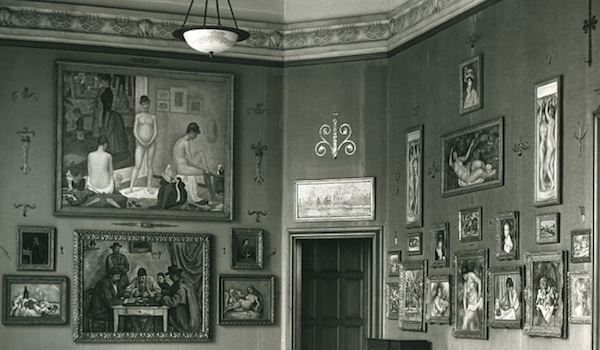The Art of the Steal

The Art of the Steal—another great doc in what’s already being dubbed the best documentary year in a long time—does something seemingly impossible. It crafts a compelling and informative story about art galleries. It sounds as dry as the Sahara on paper, but the story is surprisingly engaging. I objected to director Don Argott’s almost completely one-sided approach to the material, but as long as you keep that in mind throughout, this can be a truly rewarding experience.
The film centers around Dr. Albert C. Barnes, a wealthy, anti-establishment suburban Philadelphia native who, in the first half of the 20th century, amassed one of the most impressive and expensive private art collections in history. The Barnes Collection consists of 181 Renoirs, 69 Cezannes, 59 Matisses, 46 Picassos, 16 Modiglianis and seven van Goghs, among other pieces of work, and it resided in Merion, PA, just outside of Philadelphia. When he died, an epic struggle for power and control broke out which has yet to be completely settled. If anything, it has escalated since Barnes’ death.
Barnes despised the rich, famous, and powerful of Philadelphia. His number one enemy was Walter Annenberg, who operated the Philadelphia Inquirer. And Barnes made his collection incredibly exclusive as a result. As one commenter stated, Barnes denied access to the New York Times art critic, but he’d let the town plumber come in any time of day. After Barnes suddenly died in a car crash, the vultures began to circle, but his will outlined very specific instruction on what should happen to his art. Control over the art passed down to a number of his “disciples,†and it was made clear that the art wouldn’t be moved.
After the last of the disciples died, control went to Lincoln University, a small black college. Their presidents slowly shifted away from Barnes’ wishes over time. One president, Richard H. Glanton, took the art on tour and attempted to expand hours to make the art more accessible. Glanton was despised by those loyal to Barnes (many of whom are the primary interview subjects in the film), but he was small potatoes to what the politicians and non-profit organizations did next.
The story has the capability to frustrate you. Going against a man’s will seems like a really despicable thing to do. But when you sit back and think about what’s actually happening, some interesting questions are raised. What’s really best: to keep this priceless art hidden at the request of a somewhat bitter man who died more than 60 years ago, or to open it up to the public and let everyone learn and appreciate the incredible work on display? This might be an instance in which what’s best and what’s right are in opposition, but the film raises the questions. Unfortunately, it doesn’t take the time to explore them.
The film is incredibly one-sided, more so than any documentary, outside the Michael Moore catalog, that I’ve seen in a long time. The only person interviewed that isn’t a Barnes disciple is Glanton, and it appears he’s only on hand because he wants to prove he wasn’t as bad as what came after him.
This year is already being talked up as one of the best in a long time for documentaries. Joan Rivers: A Piece of Work was one of my favorite films from the first part of the year. Inside Job and Countdown to Zero received very positive buzz out of Cannes. And Exit Through the Gift Shop and Restrepo, among others, have already opened to rave reviews. And that’s not even discussing what’s coming later this year. I’ve never been a huge fan of documentaries. Perhaps that’s because I was a student and didn’t care to sit through a lecture, no matter how interesting the subject might have been. This year, that has definitely changed.
The Art of the Steal is the second doc this year that I’ve really enjoyed. It’s not perfect, but it tells a fascinating story and raises some interesting questions.













